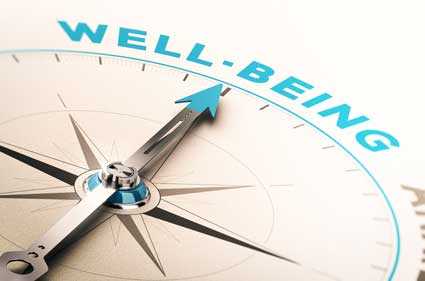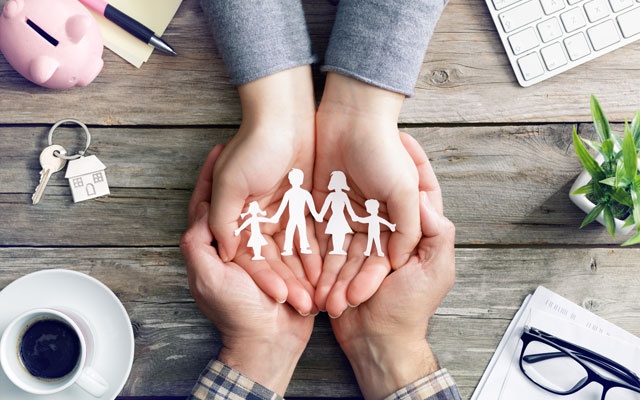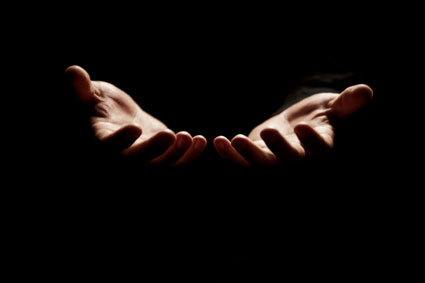We have heard some stories of teens who were bullied. By learning about some of these teens, it helps to bring the idea of bullying to life. When you feel like you know more about the person it is more difficult to ignore their struggle with bullying. Throughout this article we will look at the bully's victim, including who typically gets bullied, as well as some of the risk factors and warning signs. The more we know about those who often get bullied, the more we can be ready to step in and help that person.
Who Gets Bullied
It would be great, and helpful, if all victims of bullying could easily be identified. If we could narrow down one set of characteristics that all victims had we could intervene right from the start. Unfortunately, there is no one size fits all when it comes to bullying. The victims of bullies can be from all walks of life and look many different ways. So while there is no one definitive way that a victim may look or act, there are some characteristics that are more often present than not. Those are the ones we will explore in this article.
Not every victim will have the following characteristics, but they are commonly found among those who are bullied:
- They usually don't have a lot of friends, or are considered loners. Those who are not in a group of friends are more susceptible to bullying because they appear weaker. When teens are in a group, among other friends, they do not appear as weak. One thing that the bully needs is to believe they are more powerful than the person they are going to bully.
- They often appear as weaker to the bully. They seem like people who are quieter, or more laid back. The bully believes that the person is not likely to stand up for themselves, again making it easier for them to exert power over them.
- Bully victims are often those tweens and teens who have learning disabilities, or have special needs. For example, those students who have autism may end up being at a higher risk for bullying, as are those who have mental health issues, or who are gay.
- Victims of bullying are often not assertive. They also may have been aggressive during early childhood, which may have led their peers to reject them more, or made them become more isolated.
To the bully, the person they are bullying is perceived as being alone, weak, and someone they can easily exert power over. Bullying is about having power over someone who is perceived as being weaker. Those who are alone or who seem weaker, for whatever reason, may make easier targets for the bully. That is not to say that every victim has these same characteristics. Anyone can be bullied. But these are some general characteristics shared among most bully victims.
Knowing what types of characteristics are often present in the victim, it is easier to determine what the risk factors are. Research indicates that only a small percentage of teens who are bullied actually tell their parents about it. Most try to deal with it on their own, or just internalize it, which can lead to serious problems, such as depression and suicide.
Some of the risk signs that may indicate a child is being bullied include:
- The teen having unexplained injuries, or damaged or missing belongings
- Frequently gives excuses to stay home from school. It is estimated by the Department of Education that each day in America there are 160,000 students who stay home from school out of fear of bullying
- May hurt themselves as an outlet for their emotional pain, such as purposely cutting or burning themselves.
- They may suffer from eating disorders, such as withholding food
- They lose interest in activities that they once enjoyed engaging in
- May appear withdrawn, moody, or anxious, as well as have low self-esteem
When parents see these risk factors present in their teen, it is time to intervene and find out what is going on. Although the teen may be reluctant to discuss it, they could be being bullied. Many teens avoid discussing bullying with their parents or teachers for a variety of reasons, including not wanting to worry their parents, believing that nothing will be done anyway, or they may not want the parent speaking to the school about because they fear it will only get worse.
For many teens though, as we have read about, it becomes worse and is a situation that they cannot handle without help. For many of them, the only way they escape the continuous bullying is through suicide. According to the Suicide Prevention Resource Center, suicide is a major problem among the nation's teens and is the third leading cause of death among those ages 12 to18.
Interestingly, the center also reports that both victims and bullies are at a higher risk for suicide. Both the victims and bullies tend to have a higher rate of depression and suicide. Depression is a major risk factor of suicide. Teens who are bullied often turn to internalizing their problems and in doing so they become withdrawn and depressed. In addition to the suicide risks that are present with bullying, victims are also at an increased risk for mental health problems well into adulthood.
The Suicide Prevention Resource Center also reports that suicide rates for those teens who are lesbian, gay, bisexual, or transgendered is two to four times higher than their heterosexual peers. This group of individuals is also at a higher risk for being bully victims. Research has shown that as many as 65 percent have experienced bullying.
Being able to identify the risk factors and common characteristics of a bully victim is helpful. But knowing what to do once you have identified the victim is another. The answer to this lies in prevention and intervention. Preventative measures will help to keep the incidents of bullying down in the community, while intervention strategies can help bring an end to bullying that starts. Intervention can be a life-saving, and life-changing, process. Intervention needs to address both the victim (e.g., getting them help they may need for depression), and environment (e.g., addressing bullying in the school and community).
Coming up next, we will take a look at the bully, including who it is that bullies and what the warning signs are that a teen is the bully.
Over the past couple of decades there have been a lot of incidents that have catapulted bullying into the national spotlight. These incidents have raised awareness about the issue of bullying, both as someone who is bullied, and someone who does the bullying. They are issues that have had deadly consequences and have sparked a national discussion on what can be done to help curb bullying in our middle and high schools. Some of these incidents have helped us to learn more about bullies, what happens when people are bullied, and the violence to which it can escalate.
Deadly Cases
When parents send their tweens and teens to school, they assume that they are going to be safe. After all, they are in a classroom with adult supervision. Many high school campuses today have a security guard or two, and some even have campus police that are present. All of these measures are meant to create a safer, more secure learning environment.
- Columbine High School – In 1999, Eric Harris and Dylan Klebold, two students in Colorado, walked into their high school and carried out a massacre that left 13 people dead (12 students and one teacher). It's the deadliest incident that has taken place at a high school in the country. The pair had masterminded a plan to kill other students. Many people contend that there were plenty of warning signs that they were going to carry out violence against their classmates, and that it was overlooked by parents. A group of people sued the parents for more than $1 million. Some believe that Harris and Klebold were bullied and this was their retaliation. Others believe that they were bullies and their bullying escalated to this level. Both of these teens committed suicide, thus ending the massacre.
- Westside Middle School – In 1998, in Jonesboro, Arkansas, two boys who were just 11 and 13 years old developed a plan to pull the fire alarm during the school day, sending everyone outdoors. As the people exited the building the two boys hid in the nearby woods and began shooting at the crowd, leaving four students and one teacher dead. Many people believe the two of them were bullies at school and this deadliest middle school massacre that they carried out was the pinnacle of their antics. Both of the boys were sentenced to incarceration until the age of 18.
- Thurston High School – In 1998, in his Oregon high school, Kip Kinkel went on a rampage that left his parents dead, as well 2 students. He also wounded some 22 other students. It is reported that as a younger child, Kip had learning disabilities and was held back a grade. Before the massacre he also had been in trouble for having a loaded handgun at school.
These are just a few of the worst-case scenarios that have played out in American middle and high schools. We don't know definitively what prompted these students to carry out the massacres, whether they were the bullies, or they were being bullied, or if they suffered from mental health issues. But we do know such incidents have prompted the nation to take a closer look and a more active approach handling school violence, including bullying.
Just as with the bully victims, if we had one set of characteristics that would define the bully, it would make things a lot easier. But that's just not the case. For many years people believed that the bully was usually someone who had low self esteem and was an aggressive person. But research is now showing, much to people's surprise, that bullies can also can be the popular kids as well.
Some characteristics of bullies include:
- Having difficulty following rules and being impulsive
- Lacking empathy and tending to be physically stronger than other kids
- Often having overly permissive parents, or parents who use harsh discipline: Many teens who bully also have bullying issues in their own home (e.g., their father may be a bully in the house).
- Bullying can at times be a sign of other antisocial behaviors, such as school truancy, drinking alcohol, smoking, stealing, frequently fighting, and dropping out of school.
- School bullies also can be the popular teens, who are looking for a way to further their status. By bullying they are able to gain the respect and attention of their peers.
Bullies can be both the students who are doing poorly in school and taking out their aggression on others, and they can be the popular teens who are doing great in school and are looking for a way to make their peers laugh and like them even more. Because the bully can be either of these people, it makes it a little more difficult to keep tabs on who may be the bully in your community.
Warning Signs
Just as there are some warning signs that a middle or high school student is being bullied, there are some signs that they may also be the bully. No parent wants to think that their child is the bully, but the reality is that every bully is someone's child. Here are a few of the warning signs that a teen may be the bully:
- They lack empathy and look to blame others when something goes wrong or they become frustrated.
- Teens that live in homes that have a lot of chaos going on may be more prone to being a bully. As you recall, teens need a safe and secure environment in order to thrive as they are growing and developing.
- They may have difficulty sleeping or may have behavioral issues.
- The tween or teen may be obsessed with popularity and how to become more popular.
- Not having a good relationship with parents. Many middle and high school students tend to put their friend's first, but those who have a poor relationship with their parents may be more prone to bullying.
Another sign that someone is a bully is that there are complaints of them bullying. Some parents who receive such complaints find it difficult to believe their child would engage in such behavior, and therefore sweep it under the carpet. This is especially true if their child is a popular student who is doing well in school.
Many people tend to think of bullies as being males, and while they may account for more bullying cases, they are not the only ones who bully. Females also engage in bullying. In fact, the Public School Review issued a report in 2008 that stated that boys are three to four times more likely to engage in bullying behaviors. However, bullying among females is on the rise.
The report states that males often bully because of personal issues, such as a desire for attention or a struggle for power. Females tend to bully with the intent of socially ostracizing someone. They turn to verbal or nonviolent bullying tactics -- such as teasing and spreading rumors, graffiti, practical jokes, cyber-bullying, and stealing property. Yet there are plenty of incidents with females engaging in aggressive bullying behavior, such as the one involving six teenage girls in Lakeland, Florida. The girls lured a classmate to their home and then spent 30 minutes beating the girl up and video taping it along the way. The girls were subsequently arrested and charged with the incident. The girls involved claimed it was retaliation for cyberbullying the girl had engaged in, whereby she posted rumors about the girls online.
Bullying knows no boundaries when it comes to class, race, and even gender. It's all around us and can be at any school or in any community, regardless of how wonderful the neighborhood may seem.
Coming up next, we will look at how parents and teachers, and those in the community, can help.





























